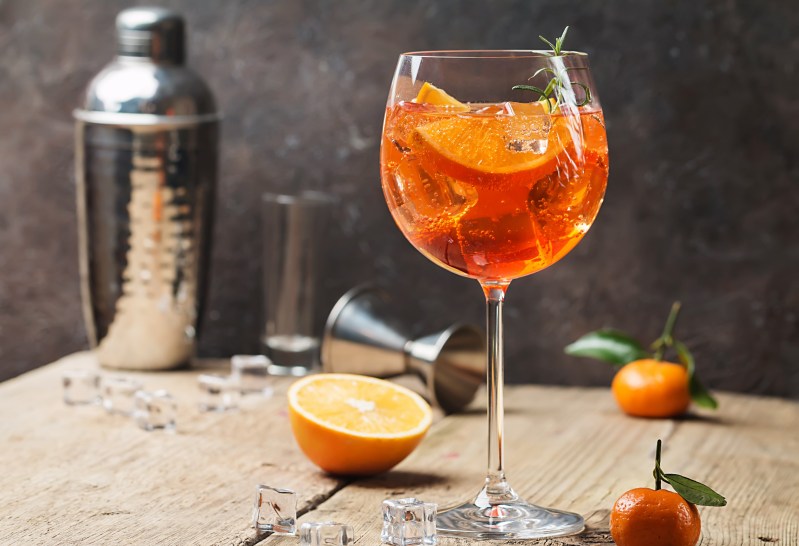
The Aperol Spritz is a ubiquitous cocktail over the summer months. With its combination of sweet and bitter and a bright, distinctive color, it has something for everyone — so it’s no surprise it’s taken the world by storm over the last few years. But while this drink is a great choice for a summer sipper, maybe you’re looking to expand into something a bit different. In that case, it’s time to explore the wider world of spritzes.
A spritz is just a mixed drink made with sparkling wine, a dash of water, and any kind of liqueur or amaro to add complexity and interest. That template allows for a lot of experimentation and adjustment to your own tastes, so you should feel free to try out making spritzes with whatever you happen to have to hand. One of my favorite unexpected variations is to use ginja, a Portuguese sour cherry liqueur typically drunk as a shot in place of the Aperol. Its sweet and sour flavors are the ideal substitution for the thickness and sweetness of Aperol.
But if you’d rather have some guidelines for where to start, then there are a few classic spritz recipes that you can try out at home.
Alternative spritz ideas
A more bitter and intense alternative that’s popular in Italy is a Campari spritz, which simply swaps one amaro for another. The Campari may make this too bitter for some, but if you enjoy strong bitter flavors then you’ll love this version — and it is a lovely deep red color which looks great in the glass.
For those with a sweeter tooth who are looking for a more floral take on the spritz, then the Hugo spritz is the way to go. This uses elderflower liqueur like St. Germain in place of the Aperol. For my palate, it’s a bit sweet so I dial down the ratio of St. Germain to sparkling wine, but it’s great if you want something less bitter than the Aperol.
Finally, another Italian favorite and a delicious summer treat is a limonchello spritz. It has sweetness from limonchello rather than Aperol, but also a lovely sour note which mixes surprisingly well with sparkling wine.



